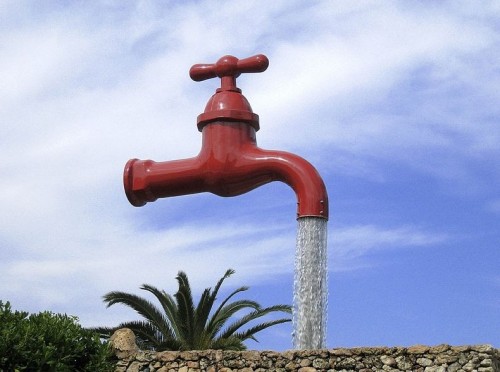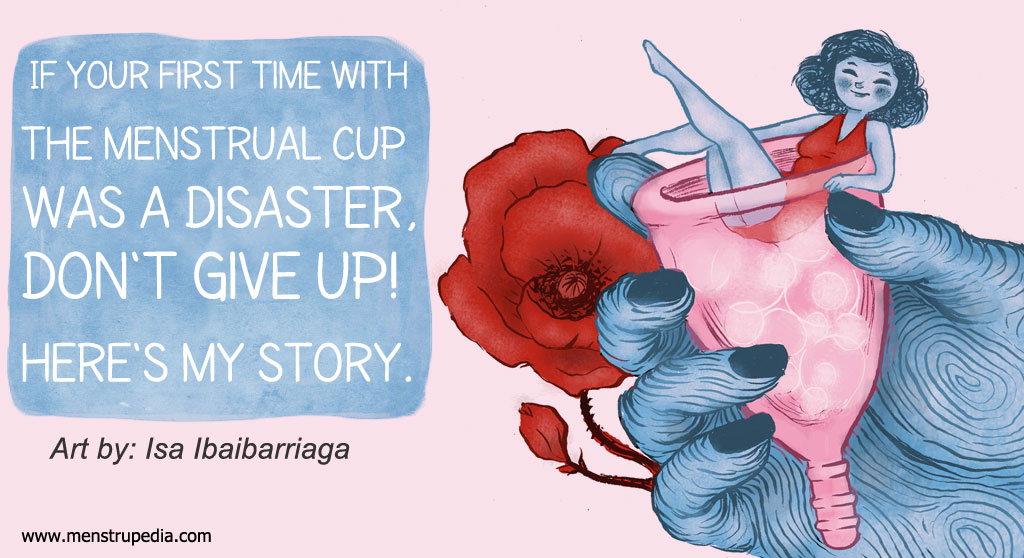Image credits:- “Tap fountain, Santa Galdana, Menorca” by mira 66 via Flickr/CC BY 2.0
I had never heard of menstrual cups until six months ago, but I haven’t stopped hearing about them since. People are using them, talking about them, writing about them. Of all the reasons to switch from pads to a cup, the two which resonated with me were the financial and environmental. Added to this were the discussions about comfort, reduced chances of infections, ease of use.
Everything I’ve read about the cup is overwhelmingly positive. I’m writing about it for another reason though. My experience with the cup has on the whole been good, but the fact is, however you choose to handle your period, you are going to need some sort of infrastructure. So here I present to you – (some other) things to consider before buying a cup.
1. Buy the right size. Cups are cheaper than pads in the long run. In the short run, if you buy a cup because it’s the cheapest option, because it’s what your best friend is using, because it’s your favorite colour, and it does not fit: you will have to buy another. Which is not a smart move if you embarked on this whole thing to save money. And using the wrong size is not really an option (it’ll leak, won’t open properly, might cause cramping if you have a low cervix.)
2. Sterilizing. Many cups need to be sterilized by boiling. This generally will have to be done in a kitchen, on the stove, and you will have to watch it to make sure it does not melt. Some can be boiled in a microwave, if one is available. The other option is to use sterilizing tablets. The reason I raise this point is that sometimes women express hesitation in boiling their hygiene products in full view of the household. Now, if the stove is good enough for your dal, it’s good enough for your cup. But to be realistic, if this is going to be a problem, figure out what you are going to do before you buy the cup. You need to sterilize it before you use it. Also, if you are uncomfortable using the same vessel to make tea and also boil the cup, you will need a dedicated vessel.
3. So much water. I have read that the risk of infection from a properly-maintained cup is minimal and that the risk of infection is primarily from your hands. So you need to wash them. Before inserting the cup. Before removing it. After removing and re-inserting. There is a lot of hand-washing involved in this process. The cup also needs to be washed during your period, ideally with potable water. Some suggest using hot water. Not to mention the water needed to boil it. So if water is in short supply or not particularly clean – you might have a problem.
4. A clean surface: Sterilizing the cup seems pretty pointless unless you have a clean surface on which to keep it till you insert it. This is not a problem for me in my bathroom at home. But if I were relying on public toilets, or if I had less control over the cleanliness of my surroundings, I would need to figure something out before buying the cup.
5. Other paraphernalia. The cup itself is a one-time buy. If you treat it properly, you should be able to use it for several years. (Presuming you don’t need a different size.) But you still need things. Fuel for sterilizing, or else sterilizing tablets. Toilet paper. Something to clean the suction holes. Vinegar and/or baking soda, again to clean it. Soap to wash your hands. Scent-free mild soap to wash the cup. Perhaps some lubricant. You might not need all of these. Nothing is expensive on its own. All are used a little at a time. But it all adds up.
I don’t mean to dissuade anyone from using the cup. I certainly plan to continue using mine. But “remove-wash-reinsert and you’re good to go” is only part of the story. It’s a device that requires maintenance, and you need to consider that before buying it.
Members of a Facebook community to which I belong, which discusses menstruation, occasionally ask how to use the cup while travelling, at work, in trains. These are all places where you do not have the conveniences and resources of home: the bathroom, the kitchen, running water, privacy, clean surroundings. It’s when you have all of this that using the cup is truly convenient. When you don’t, using the cup can be awkward.
These are also issues you need to think about before recommending that someone use a cup. The continued use of disposable menstrual products is being seen as a problem that we have to address collectively. But in advocating alternatives to disposable products, we can’t forget that their use requires the access to resources. So if women should use cups and not pads, they should also have greater supplies of clean water. And any message about the use of cups is incomplete without a message about greater access to resources in general, and those related to hygiene in particular.
This article was originally published here in The Ladies Finger.
Author – Vasudha Katju
Vasudha Katju is a research scholar at JNU studying contemporary women’s activism.









